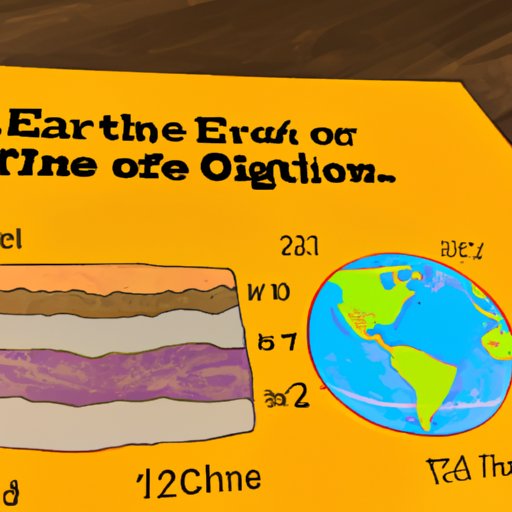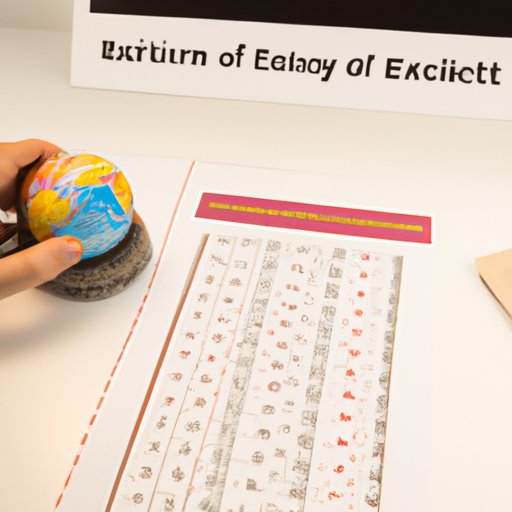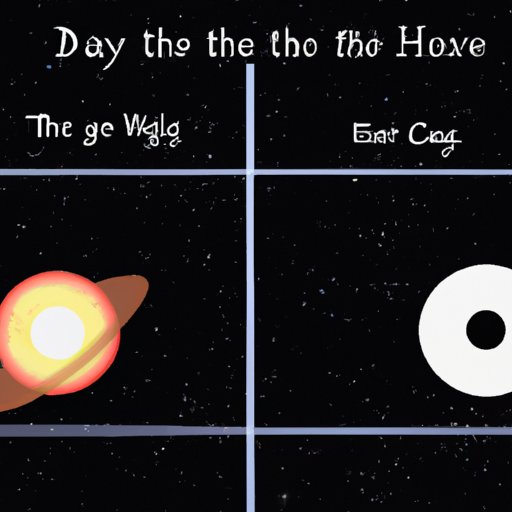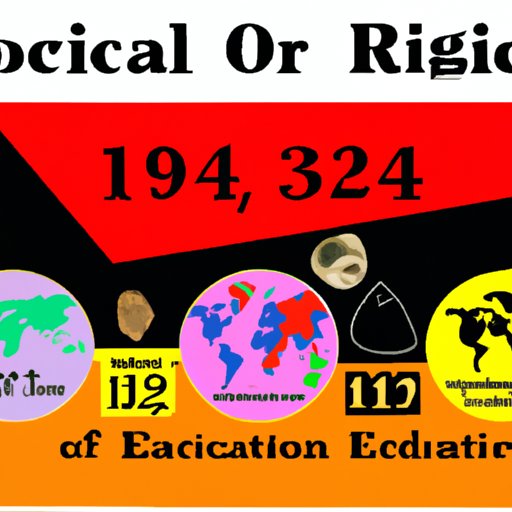Introduction
Determining the age of the Earth has been a key question in scientific research since ancient times. In modern times, scientists have developed a variety of ways to estimate the age of our planet, utilizing evidence from fossils, rocks, meteorites, and other sources. This article will provide an overview of how scientists have estimated the age of the Earth and what evidence they use to do so.
A Brief History of Scientific Estimates for the Age of the Earth
Ancient attempts to measure the age of the Earth relied on religious and philosophical ideas rather than scientific evidence. The ancient Greeks believed that the Earth was created by the gods and had no beginning or end. Other ancient cultures, such as the Babylonians, believed that the Earth was formed at the same time as the rest of the universe.
Modern estimates for the age of the Earth are based on radiometric dating, a process which uses the decay of radioactive elements to determine the age of rocks and minerals. This technique was first developed in the early 20th century and has since been refined and improved upon. Radiometric dating has allowed scientists to accurately estimate the age of the Earth at 4.5 billion years old.
How Old is the Earth According to Geologists?
Geologists use a variety of techniques to estimate the age of the Earth. One of the most important tools they use is the principle of uniformitarianism, which states that the processes that shape the Earth today are the same processes that shaped it in the past. By studying current geological processes, geologists can infer the history of the Earth’s surface and its evolution over time.
Geologists also examine evidence from fossils and rocks to gain insight into the age of the Earth. Fossils provide evidence of the evolution of life on Earth, while rocks can reveal the Earth’s geological history. By studying these sources of evidence, geologists can gain a better understanding of the age of the Earth.
What Are the Main Sources of Evidence Used to Determine the Age of the Earth?
The main sources of evidence used to determine the age of the Earth include radioactive decay, fossils, magnetic reversals, and meteorite impacts. Radioactive decay occurs when unstable atoms break down, releasing energy and particles. This process provides insight into the age of rocks and minerals. Fossils provide evidence of the evolution of life on Earth, while magnetic reversals reveal changes in the Earth’s magnetic field over time. Meteorite impacts provide evidence of the Earth’s interaction with other objects in space.

Exploring the Different Theories on How Old the Earth Is
There are several theories that attempt to explain how old the Earth is. The theory of plate tectonics suggests that the Earth is approximately 4.6 billion years old, while the Big Bang theory states that the Universe is 13.8 billion years old. The theory of evolution suggests that life on Earth has evolved over millions of years. Each of these theories provides evidence for the age of the Earth, but none of them can be definitively proven.

Examining the Various Methods Scientists Use To Calculate the Age of the Earth
Scientists use a variety of methods to calculate the age of the Earth. Radiometric dating is one of the most commonly used methods, and it involves measuring the amount of radioactive isotopes present in a sample. Potassium-argon dating is another method used to date rocks and minerals, while uranium-lead dating is used to date older rocks and minerals.

A Look at the Relationship Between the Age of the Earth and the Age of the Universe
Estimating the age of the Universe is a difficult task, as there is no direct evidence of when the Universe began. However, scientists have estimated that the Universe is between 13.7 and 14 billion years old. The age of the Earth is significantly younger than that of the Universe, but the two are related. The age of the Earth affects the age of the Universe, as the formation of our planet is part of the overall development of the Universe.
What Can We Learn About Our Planet by Knowing Its Age?
By knowing the age of the Earth, we can gain insight into the formation of our planet and its evolution over time. For example, studying the age of rocks and minerals can provide information about the conditions that existed during their formation. Similarly, examining fossils can give us clues about the evolution of life on Earth. Knowing the age of the Earth can also help us understand how our planet fits into the larger context of the Universe.
Conclusion
In conclusion, scientists have developed a variety of ways to estimate the age of the Earth. By examining evidence from fossils, rocks, meteorites, and other sources, scientists have determined that the Earth is approximately 4.5 billion years old. This age is significantly younger than that of the Universe, but the two are related, as the formation of our planet is part of the overall development of the Universe. Knowing the age of the Earth can help us gain insight into the formation and evolution of our planet, as well as its place in the Universe.
(Note: Is this article not meeting your expectations? Do you have knowledge or insights to share? Unlock new opportunities and expand your reach by joining our authors team. Click Registration to join us and share your expertise with our readers.)
